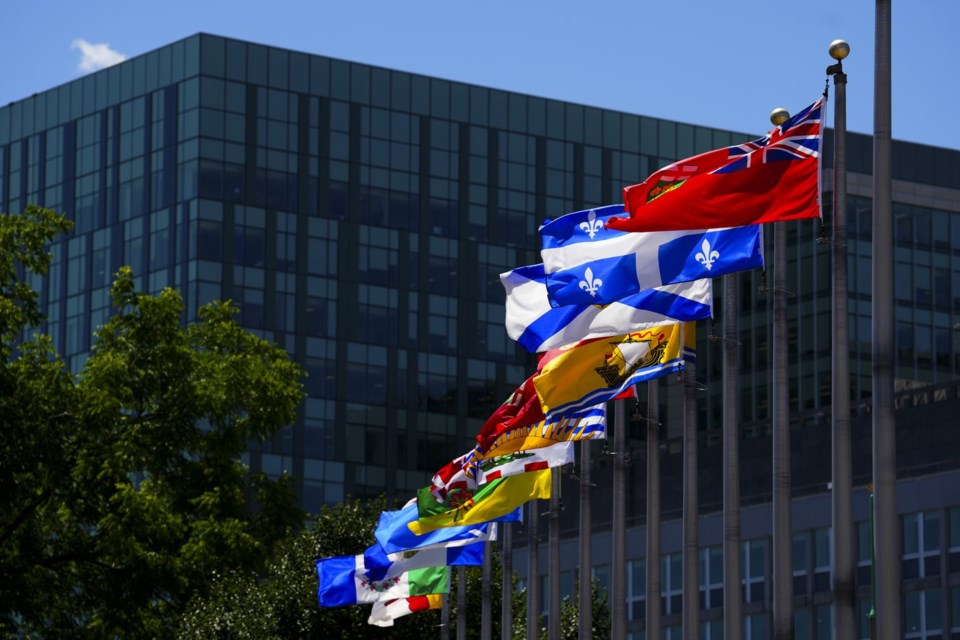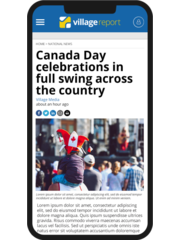The continuing threat of a trade war has Canadian politicians and business leaders looking for ways to shore up our economy in the face of potential disruptions.
Interprovincial trade barriers — the complications of moving goods and services around the country between provinces and territories with different rules — are one target.
"The rules of the game vary from one place to the next, and that just makes it hard to buy and sell across borders," said Trevor Tombe, an economics professor at the University of Calgary.
Removing these barriers could boost Canada’s economy by as much as $200 billion a year, argued the Canadian Federation of Independent Business in a 2024 report.
Here are some examples of the ways experts say Canada is holding up economic gains at its borders.
Alcohol
One example that’s gotten a lot of attention is alcohol, especially wine. Provinces have different regulations around alcohol — many have provincial sellers — and some provinces limit how much residents can transport across their borders for personal consumption, according to the CFIB report.
There are numerous restrictions on direct-to-consumer shipments across jurisdictions, the CFIB said in its report, though some provinces have recently amended their laws to loosen the rules.
But though restrictions on alcohol sales and shipments get a lot of attention, Tombe said compared with other barriers it’s “trivial.”
“If we were to solve alcohol completely, that would not do a thing ... for Canada's overall productivity,” he said.
Dairy, poultry and eggs
University of Alberta economics professor Andrew Leach argues that supply management — a system regulating supply, wholesale prices and trade of dairy, poultry and eggs — is a major domestic trade barrier.
“If any individual province wants to grow its dairy sector and export to other provinces, it can't do that. It has a provincial quota under the federal system,” he said.
“That's the one where we see sort of a combination of a broader economic policy, essentially a protectionist economic policy, that's underpinned by provincial trade barriers.”
Supply management has also come under scrutiny by the U.S., noted Leach.
U.S. access to Canadian dairy markets was a sticking point in free-trade negotiations during President Donald Trump’s last term in office, and he voiced his concerns about the issue again this week.
Dismantling supply management could not only break down some trade barriers, it could also help Canada in its trade negotiations with the U.S., said Leach.
“They would like more access to our market,” he said.
“It is going to be a bargaining question.”
However, the Canadian government has said it will protect supply management in trade talks.
Labour mobility
Differences in provincial licensing, certifications and other standards can hinder worker mobility and create labour challenges for small businesses, the CFIB said in its report.
“Depending on the particular profession, you may have more or less mobility,” said Leach.
“You might be able to work in another province with your certification. You may have to update your certification, you may have to do different training.”
In its report, the CFIB gives an example in dentistry: in some jurisdictions dental hygienists can give freezing injections while in others, they cannot.
“As such, a dental hygienist who wants to practice in a jurisdiction where dental freezing is required may need additional training,” the report said.
Trucking
Conservative leader Pierre Poilievre has argued that tackling trucking regulations would be the easiest way to get more Canadian goods moving across provincial borders.
“We have different trucking requirements by different provinces,” said Leach.
“In some cases, it makes sense for B.C. to have different rules than Saskatchewan because the terrain is very different, but it still means that you may not be able to operate a single piece of equipment to move one load across the country, or that certain operators won't be able to move easily between provinces.”
Some of the differences the trucking industry faces between provinces include different winter road maintenance standards, training standards, rest area access, bridge heights and clearance requirements, according to a 2023 report by the Canadian Trucking Alliance.
For example, the western provinces have different definitions of sunrise and sunset, creating “illogical constraints” that impede the movement of truckers carrying oversize goods, the report said.
In the spring, the CTA says a patchwork of weight regulations creates challenges and inefficiencies, especially on rural routes as truckers contend with different road ban regulations between municipalities and provinces.
“Little frictions”
Leach calls many of these barriers “little frictions” — things like different building codes between provinces, or different securities regulations.
Infrastructure capacity is another trade barrier, said Tombe.
“That's an expensive one to address,” he said, “but is also a big issue inhibiting the amount that we can trade east, west.”
Tombe thinks it’s unlikely that mutual recognition of compliance across provinces will happen on a broad scale, but he does think it could happen in specific areas, like trucking, professional licensing or agriculture.
“For many items, you have multiple inspections of the same thing, when it's produced, when it crosses the border, when it arrives for the customer. You really only need one inspection, and we could simply defer to each other,” he said.
“If B.C. inspects it, we should just trust that.”
— With files from Maura Forrest in Montreal and Dylan Robertson in Ottawa
This report by The Canadian Press was first published Feb. 7, 2025.
Rosa Saba, The Canadian Press

